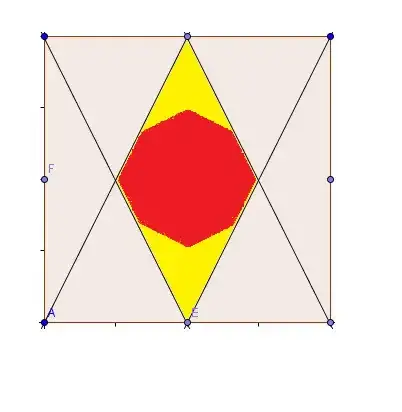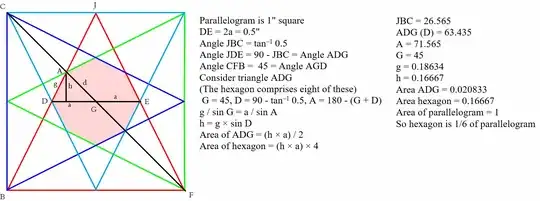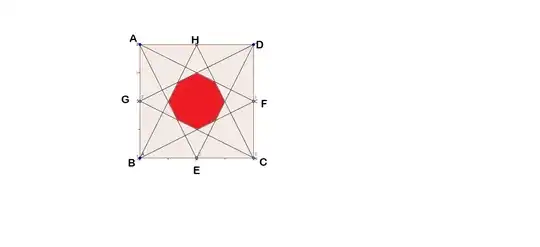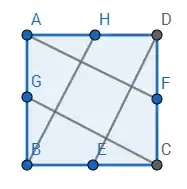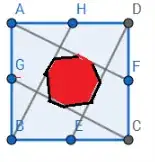The following picture is constructed by connecting each corner of a square with the midpoint of a side from the square that is not adjacent to the corner. These lines create the following red octagon:

The question is, what is the ratio between the area of the octagon and the area of the square. One is supposed to find the solution without a ruler.
By removing some lines, I find it easy to see that the ratio between the yellow area and the square is 1/4. But I am not sure if this helps.
